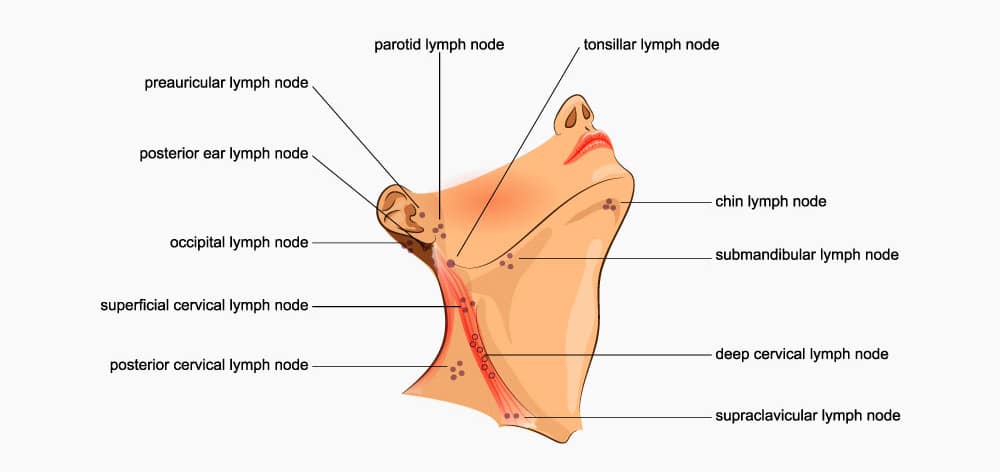TREATMENT
Neck Dissection
TREATMENT
Neck Dissection
What is a Neck Dissection?
A neck dissection is a procedure performed to gently remove lymph nodes in the neck that either have cancer or are at high risk for having cancer.
The picture below demarcates the different levels of the neck that contain lymph nodes. Only selective levels are examined during surgery and are tailored to the specific type of cancer that requires treatment.
Anatomy of Cervical Lymph Nodes

Indications for Neck Dissection
Neck dissection is indicated for patients with a cancer diagnosis or when cancer is suspected. This procedure allows for the evaluation and removal of affected lymph nodes, contributing to a comprehensive treatment approach.
Understanding the Procedure
At Century ENT, our surgical procedures are carried out with utmost attention to patient comfort and safety. These procedures are conducted under general anesthesia to ensure you experience no pain during the process. The typical duration of these surgeries ranges from 1.5 to 2.5 hours. They are performed in a hospital setting, where patients are closely monitored and usually stay for observation for 1-2 nights. This approach guarantees comprehensive care and aids in the successful recovery of our patients at Century ENT.
Potential Risks
- Pain – controlled with medications
- Bleeding
- Infection
- Nerve injury – nerves encountered are the facial nerve (controls lip movement), spinal accessory nerve (controls shoulder movement), and hypoglossal nerve (controls tongue movement). Your surgeon will discuss these risks as they vary by patient.
- Chyle leak – a leak of chyle fluid (lymph fluid) that may require temporary dietary change and/or closure with another procedure.
Post Operative Care
At Century ENT, we emphasize postoperative care as much as we focus on surgical precision. On the day of the procedure, we typically encourage a regular diet, supporting your body’s nutritional needs for healing. Basic wound care instructions are provided to maintain cleanliness and prevent infections. We also implement physical therapy plans designed to enhance neck and arm mobility, an essential part of the recovery process. For patients experiencing lymphedema, we provide effective management strategies to alleviate symptoms. However, for the initial two weeks following the procedure, we advise limited physical activity. This careful approach helps ensure a smooth and speedy recovery for all our Century ENT patients.
